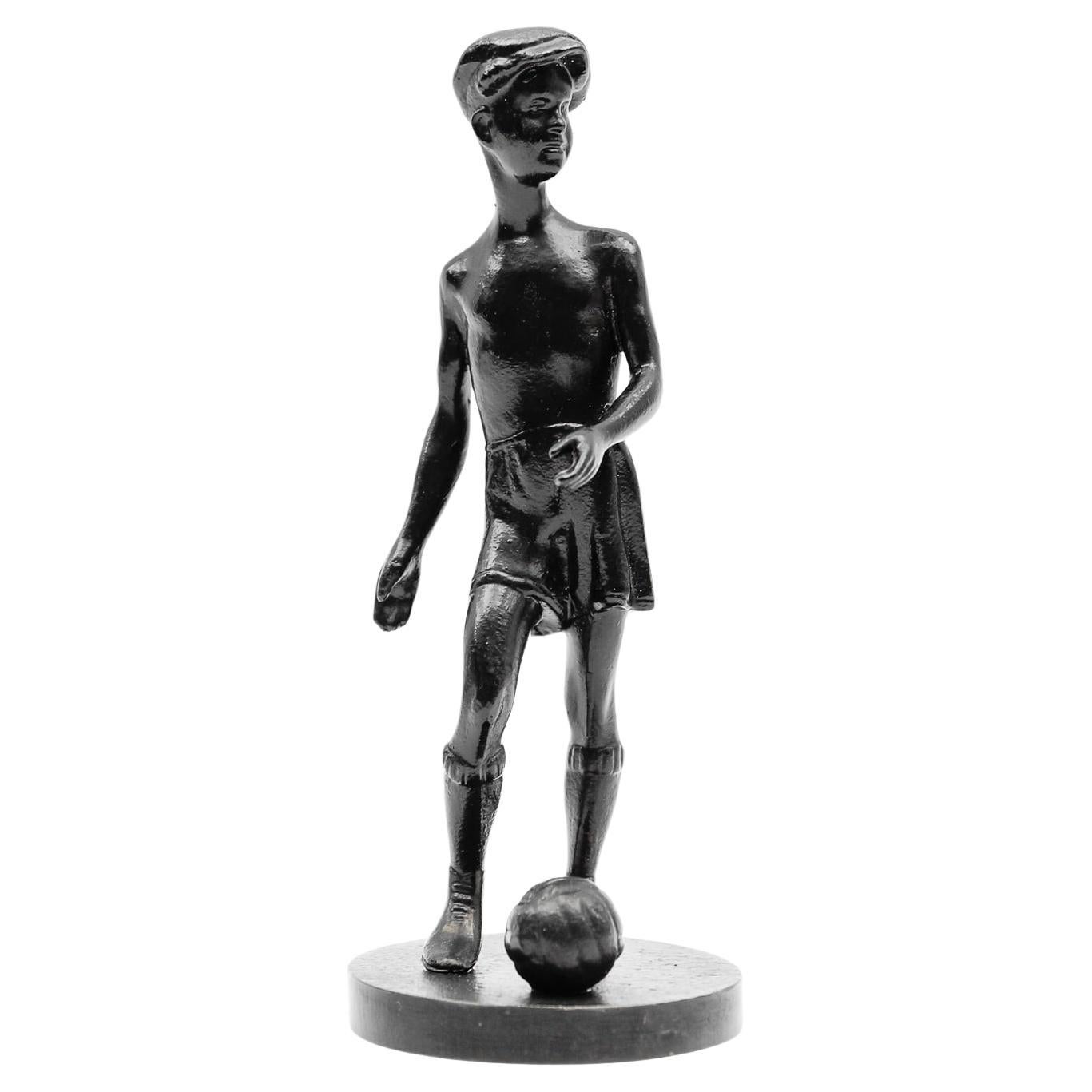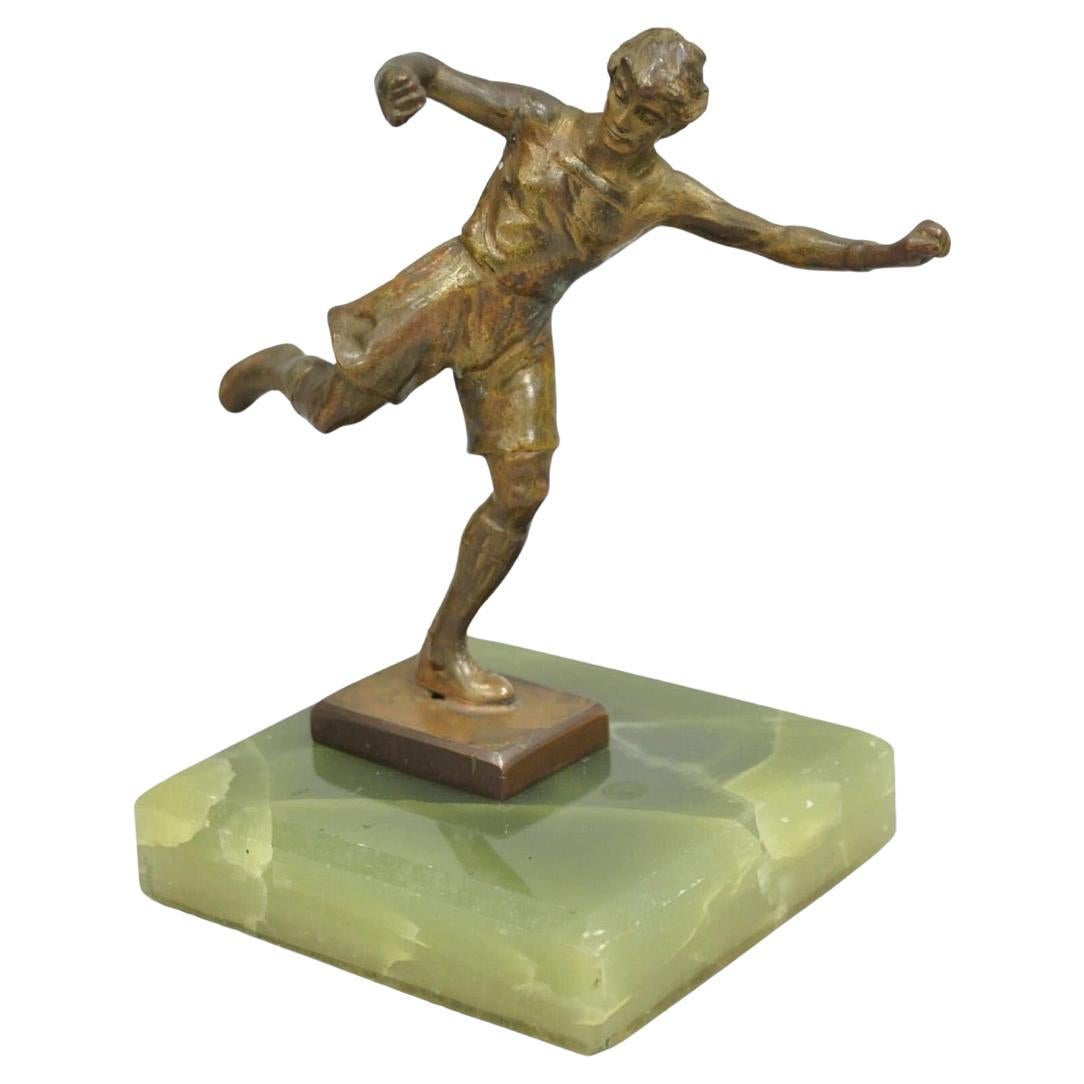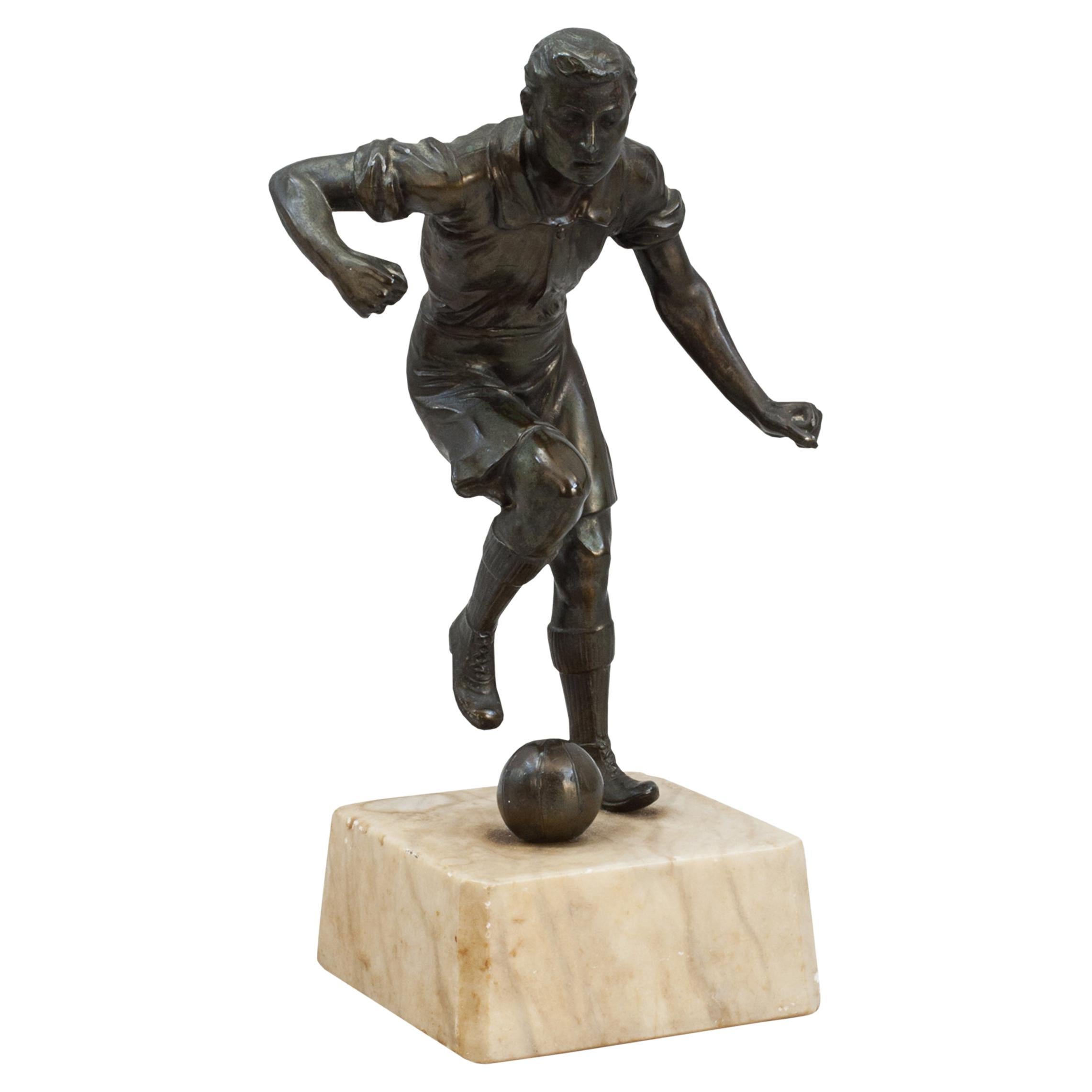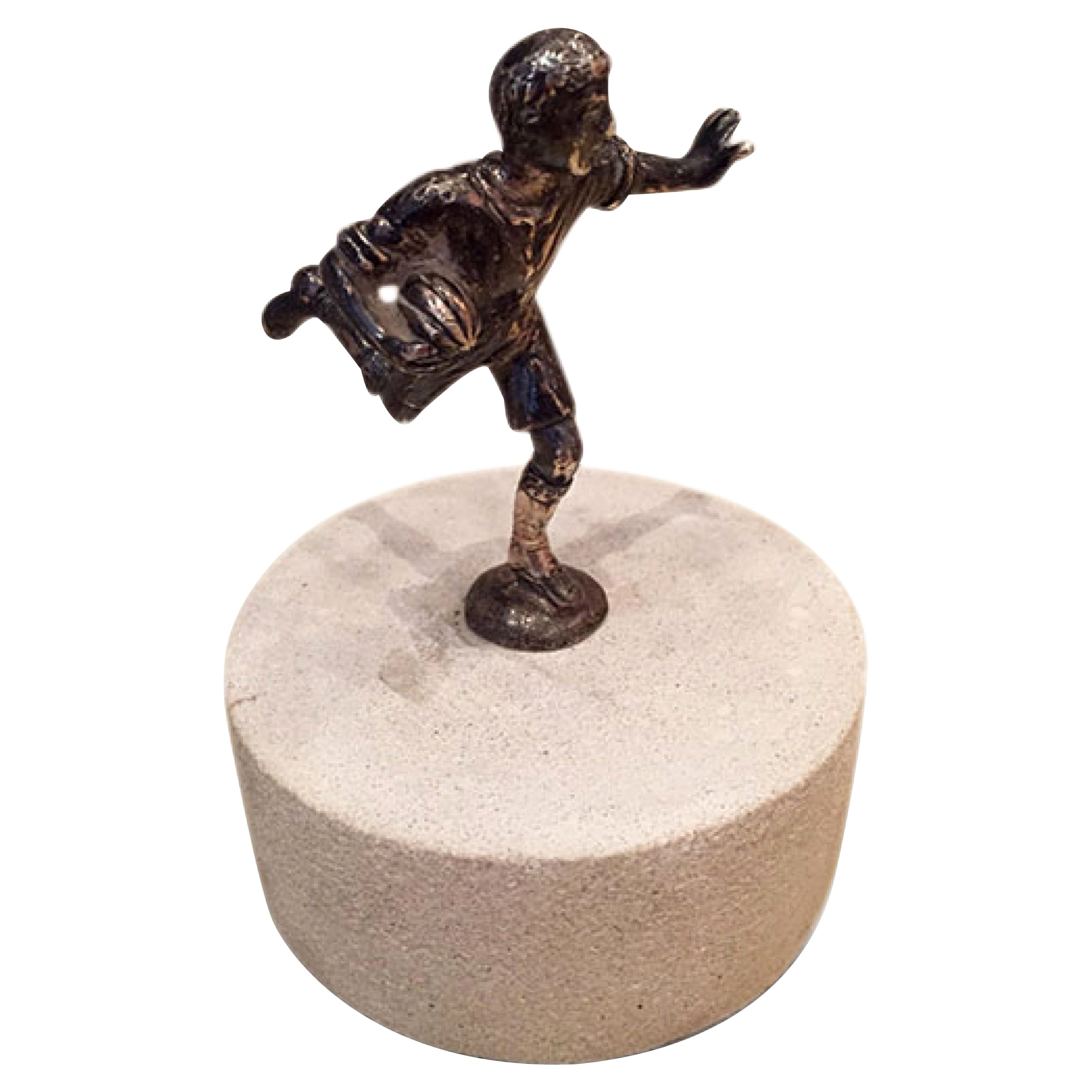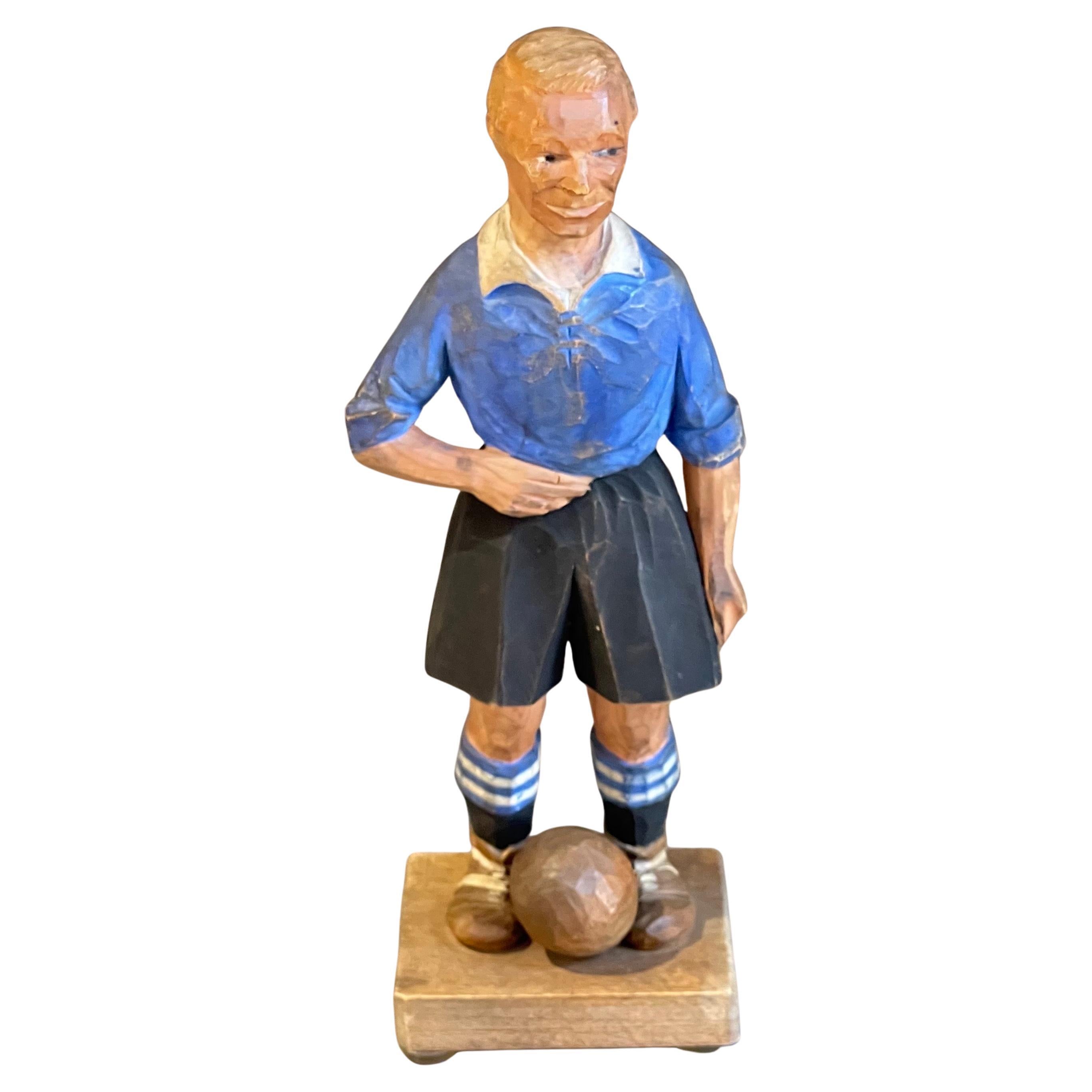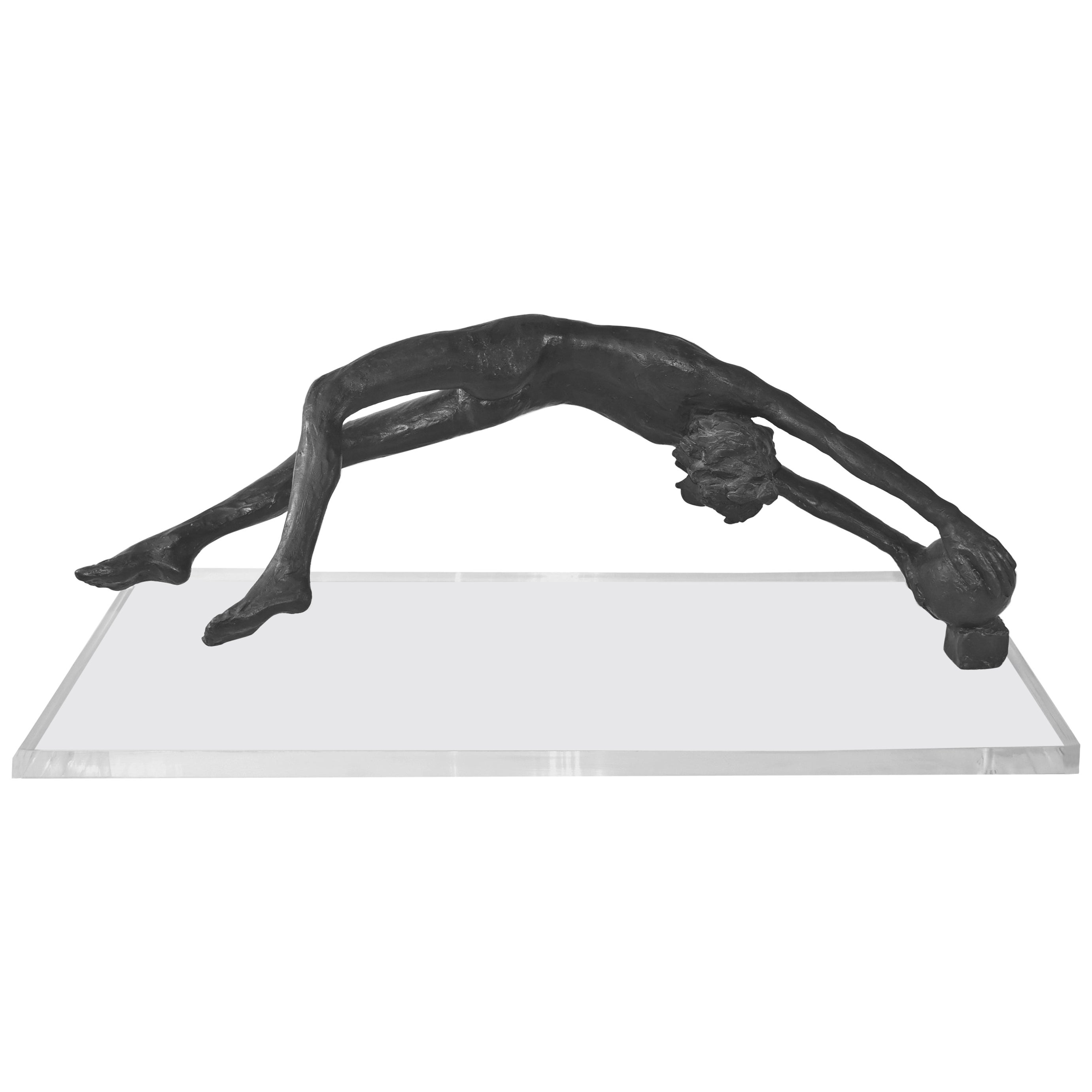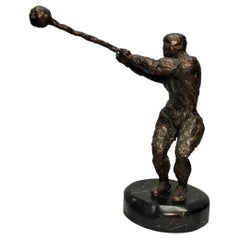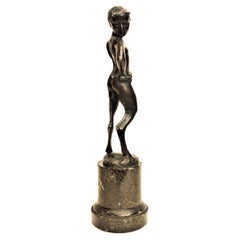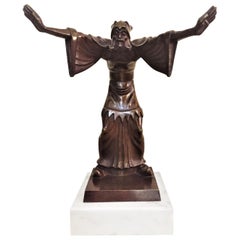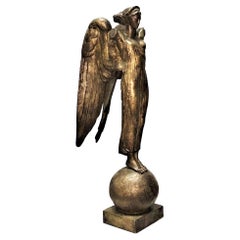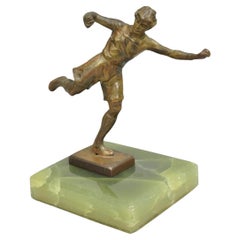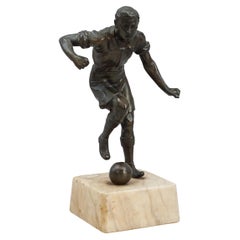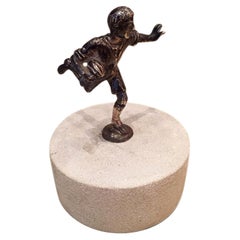Items Similar to Soccer Player, German Art Deco Patinated Bronze Sculpture, ca. 1930’s
Want more images or videos?
Request additional images or videos from the seller
1 of 17
Soccer Player, German Art Deco Patinated Bronze Sculpture, ca. 1930’s
$2,800
£2,114.30
€2,436.50
CA$3,951.99
A$4,356.98
CHF 2,279.43
MX$53,452.04
NOK 28,693.52
SEK 26,832.98
DKK 18,195.86
About the Item
Art Deco
Soccer Player
Patinated Bronze Sculpture
Germany, ca. 1930’s
DIMENSIONS
Height: 9.5 inches Width: 6.75 inches Depth: 2.75 inches
ABOUT
A rare, laconic, dynamic and expressive collectible tabletop sculpture. The tense figure of a football player with clenched fists, hitting the ball at this moment, is masterfully made of black patinated bronze in a figurative-cubist manner and fully reflects the characteristic aesthetic perception of the beautiful forms and lines of the Art Deco era. Original wooden plinth and fittings.
- Dimensions:Height: 9.5 in (24.13 cm)Width: 6.75 in (17.15 cm)Depth: 2.75 in (6.99 cm)
- Style:Art Deco (Of the Period)
- Materials and Techniques:Bronze,Cast
- Place of Origin:
- Period:
- Date of Manufacture:ca. 1930
- Condition:Wear consistent with age and use. We make our best effort to provide a fair and descriptive condition report. Please examine photos attentively for they are an important part of the description. Send us a message to request more details or discuss price.
- Seller Location:New York, NY
- Reference Number:1stDibs: LU2819338588632
About the Seller
5.0
Gold Seller
Premium sellers maintaining a 4.3+ rating and 24-hour response times
Established in 1993
1stDibs seller since 2017
85 sales on 1stDibs
Typical response time: 11 hours
- ShippingRetrieving quote...Shipping from: New York, NY
- Return Policy
Authenticity Guarantee
In the unlikely event there’s an issue with an item’s authenticity, contact us within 1 year for a full refund. DetailsMoney-Back Guarantee
If your item is not as described, is damaged in transit, or does not arrive, contact us within 7 days for a full refund. Details24-Hour Cancellation
You have a 24-hour grace period in which to reconsider your purchase, with no questions asked.Vetted Professional Sellers
Our world-class sellers must adhere to strict standards for service and quality, maintaining the integrity of our listings.Price-Match Guarantee
If you find that a seller listed the same item for a lower price elsewhere, we’ll match it.Trusted Global Delivery
Our best-in-class carrier network provides specialized shipping options worldwide, including custom delivery.More From This Seller
View AllCannonball Thrower, American Modernist Patinated Bronze Sculpture, ca. 1960
Located in New York, NY
Definitely created by a master sculptor, this small but very dynamic modernist sculpture depicts a cannonball thrower in the moment of forceful rotation before the actual throw of th...
Category
Mid-20th Century American Mid-Century Modern Abstract Sculptures
Materials
Bronze
Austrian Jugenstil Patinated Bronze Sculpture of Fawn Youth, Ca. 1900
Located in New York, NY
Probably Austrian, this lovely Jugenstil desk-sized black-patinated bronze figurine on its original marble pedestal depicts a fawn youth, checking the size of his tail to see how muc...
Category
Antique Early 1900s Austrian Jugendstil Figurative Sculptures
Materials
Marble, Bronze
Jenő Kerényi, Magician, Hungarian Art Deco Patinated Bronze Sculpture, 1930s
Located in New York, NY
Signed KEREMYI on the back of the plinth.
Some patina abrasions are noticeable in the back area.
The white Carrera marble base obviously is a later replacement.
Dimensions:
Height 14.75”
Width 11.75”
Depth 7.75”.
Jeno Kerényi...
Category
Vintage 1930s Hungarian Art Deco Figurative Sculptures
Materials
Bronze
Henri Louis Bouchard, The Victory of Bogota, Art Deco Bronze Sculpture, ca. 1925
By Henri Louis Bouchard
Located in New York, NY
About ‘VICTORY OF BOGOTA
Henri Louis Bouchard was an important French Romantic sculptor, known for works commemorating heroic moments in the hist...
Category
Vintage 1920s French Art Deco Figurative Sculptures
Materials
Bronze
Japanese Mid-Century Modern, Nude Boy, Patinated Bronze Sculpture, 1960s
Located in New York, NY
Original dark-brown patina, signed illegibly in Japanese hieroglyphs.
Dimensions: Height 10 inches, diameter 2 7/8 inches.
Category
Vintage 1960s Japanese Mid-Century Modern Figurative Sculptures
Materials
Bronze
American Art Deco Wrought Iron Sculpture of Nude Female, ca. 1920’s
Located in New York, NY
American Art Deco
Nude Female
Wrought Iron Sculpture
ca. 1920’s
DIMENSIONS
Height: 13 inches
Width: 4 inches
Depth: 4 inches
ABOUT
Designed in...
Category
Vintage 1920s American Art Deco Figurative Sculptures
Materials
Wrought Iron
You May Also Like
Soccer player, Art Deco sculpture, ca. 1940s
Located in Nürnberg, Bayern
Very decorative
Category
Vintage 1940s Ukrainian Art Deco Figurative Sculptures
Materials
Metal
Antique Art Deco Small 6" Bronze Onyx Base Soccer Futbol Player Sculpture Figure
Located in Philadelphia, PA
Antique Art Deco Small 6" Bronze Soccer Futbol Player Sculpture Figure on Onyx Base. Circa Early 20th Century. Measurements: 5.75" H x 5.5" W x 3.75" D.
Category
Early 20th Century Unknown Art Deco Figurative Sculptures
Materials
Onyx, Bronze
Figure Of A Football Player
Located in Oxfordshire, GB
Antique Bronzed Spelter Football Figure.
A very nice Edwardian spelter figure of a footballer about to kick a football with his right foot. The figure has a bronzed finish and is mou...
Category
Early 20th Century Unknown Sporting Art Figurative Sculptures
Materials
Spelter
English Art Deco Silver Football Player
Located in Queens, NY
English Art Deco silver plate football (rugby) player mounted on a round white marble base (20th Cent.)
Category
20th Century British Art Deco Figurative Sculptures
Materials
Marble
Antique Decorative Wooden Figurine Footballer Carl Olof Trygg Carving Sculpture
Located in Wembley, GB
Beautifully stylized a footballer man figurine with a great balance of harmony stood, portrays the beauty of the inner world through pure beauty.
Thi...
Category
Vintage 1930s Swedish Art Deco Figurative Sculptures
Materials
Ceramic, Acrylic, Wood, Fruitwood, Driftwood, Pine, Bog Wood
$936 Sale Price
41% Off
Free Shipping
Victor Salmones Cosmos Bronze Soccer Goal Keeper
By Victor Salmones
Located in Toledo, OH
Victor Samones 1937-1989 bronze study "Cosmos" sculpture Acapulco Mexico. 22" bronze soccer goal keeper male grasping a ball. Mounted on a 3/4" thick acrylic base. Signed 3 from an e...
Category
20th Century Unknown Modern Figurative Sculptures
Materials
Bronze
More Ways To Browse
German Furniture 1930s
1930s Gold Furniture
Football Player
Art Plinth
Art Deco Plinth
Art Deco Soccer
Soccer Sculptures
Hera Marble
Mayan Collection
Michelangelo Buonarroti
Napoleon Sword
Polychrome Wood Statue
Psyche Sculpture
Signed Laurel
Terracotta Figurines
Victorian Porcelain Figurines
Vintage Furniture Kenya
Worker Bronze
